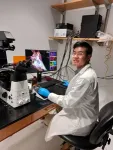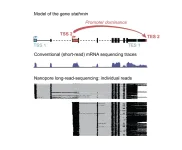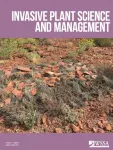(Press-News.org) A research team from the University of Lisbon and University of Oporto (Portugal) participate in the development of METIS (Mid-infrared ELT Imager and Spectrograph). This powerful instrument will equip the largest telescope in the world - the Extremely Large Telescope (ELT) - under construction by the European Southern Observatory (ESO) in Armazones, Chile.
At this critical acceptance stage of the complete and final METIS design, ESO is presenting an illustrative film demonstrating the exceptional capabilities of the instrument. The presentation will take place on May 12, at 4:00pm (CEST).
METIS will detect radiation that is invisible to the human eye, that is, radiation that is “felt” in the form of “heat”. The instrument will take advantage of the ELT's giant primary mirror, measuring around 39 meters, to study a myriad of scientific topics, from objects in our solar system to distant active galaxies with revolutionary precision.
“This is one of the ELT's most complex instruments and the participation of the Portuguese team is proof of national capabilities in the development of large international projects. Involvement in this project not only allows them to apply their experience, but also to increase it, given the inherent challenges. It also allows Portugal to be at the forefront at the time of observations, and, in addition, promotes the participation of industry, involving the ecosystem as a whole”, says Marta Gonçalves, manager of Science and Education projects at the Portuguese Space Agency.
“Participating in the development of METIS has been a huge challenge, which has put our capacities for innovation, simulation, and construction of instruments for Astrophysics to the test. Projects like this also help to develop and promote the participation of Portuguese industry in major international projects. They strategically position us at the forefront as teachers, researchers, engineers and students”, says António Amorim, responsible for the Portuguese participation in METIS, Professor in the Physics Department of the Faculty of Sciences of the University of Lisbon (Ciências ULisboa) and member of CENTRA – Center for Astrophysics and Gravitation.
The Portuguese participation in the development of METIS has several fronts. The main contribution is the construction of the mechanical support structure, alignment and access to the instrument called Warm Support Structure (WSS). Portugal also contributes to the METIS operations team and also to the scientific team.
The total cost of the METIS instrument is around €95 million, and its mass is around 12 tons (equivalent to a double-decker bus). For Mercedes Filho, manager of METIS project in Portugal and researcher at the Physical Engineering Department at the Faculty of Engineering of University of Oporto (FEUP), “the WSS has extreme requirements. On the one hand, the WSS must position the instrument with an accuracy of 10 millionths of a rotation and 100 millionths of a meter. On the other hand, the WSS must withstand a major earthquake in complete safety, being able to support an equivalent mass of 40 tons!”.
The METIS project also involved the participation of PhD and Master's students, namely André Bone and Ricardo Costa, the former a PhD student in Physical Engineering at Ciências ULisboa and the latter a Master’s student in Mechanical Engineering at FEUP.
As for Astrophysics, many scientific discoveries are being prepared in detail given the extremely high cost and competition for infrastructure, as explained by Paulo Garcia, co-responsible for the Portuguese participation in METIS, researcher at CENTRA, and professor at the Department of Physical Engineering (DEF) at FEUP: “Portugal will have privileged access to METIS, to carry out observations of celestial phenomena with a top scientific instrument that transports us to the future of astrophysics. METIS will allow an unprecedented study of several astrophysical topics, and our priority at CENTRA is to study gravity in the vicinity of the supermassive black hole at the center of our galaxy. In particular, we intend to detect new stars in orbits closer to the black hole than currently known and study their motion.”
Other Portuguese researchers involved in the scientific preparation of this initiative are André Moitinho, Professor at Ciências Ulisboa, Koraljka Muzic, researcher at FEUP, and Alexandre Correia, professor at the Physics Department at the University of Coimbra.
The ELT is under construction in Armazones, Chile by ESO. The ELT will be the largest terrestrial optical and infrared telescope when it begins operations, scheduled for the middle of this decade. With its 39-meter diameter primary mirror and advanced adaptive optics systems, the telescope will be able to see details six times finer than the James Webb Space Telescope and 20 times finer than the Hubble Telescope.
METIS International Consortium
The METIS consortium is made up of NOVA (Netherlands Research School for Astronomy, represented by Leiden University, The Netherlands), UK Astronomy Technology Center (UKATC, and Edinburgh, Scotland, UK), Max Planck Institute for Astronomy (MPIA, based in Heidelberg, Germany), Katholieke Universiteie Leuven (Belgium), Saclay Nuclear Research Center (CEA Saclay, France), ETH Zürich (Switzerland), A* (an Austrian partnership represented by the University of Vienna, the University of Innsbruck, the University of Graz , University of Linz, and RICAM Linz, Austrian Academy of Sciences, Austria), Universitat zu Koln (Germany), Ciências Ulisboa and FEUP, represented by CENTRA (Portugal), University of Liège (Belgium), Academia Sinica Institute of Astronomy and Astrophysics in Taipei (Taiwan) and the University of Michigan at Ann Arbor (USA), and, with contributions from ESO.
Schedule (CEST)
4:00pm ELT trailer starts: https://cdn.eso.org/videos/hd_1080p25_screen/elt-teaser-2021.mp4
4:01pm Welcome given by Suzanna Randal
4:05pm Short talk about the ELT by Michele Cirasuolo
4:10pm Suzanna Randal introduces METIS
4:11pm The METIS movie
4:21pm Q&A Session
Links
YouTube: https://www.youtube.com/watch?v=zgHFdokFyLU
Facebook messages and event: https://www.facebook.com/ESOAstronomy/posts/pfbid0kahjP5PJVNa3fTrzuanVJscYBANRE4LUbGRdWaG7smSFbBpyqtSLJheXJP7jyD23l
Twitter: https://twitter.com/ESO/status/1653422689690832902
Linkedin: https://www.linkedin.com/feed/update/urn:li:activity:7059189856576380928
END
About The Study: Among 14,400 febrile infants ages 8 to 60 days, the prevalence of urinary tract infection (UTI), bacteremia, and bacterial meningitis was lower for infants who tested positive for SARS-CoV-2, particularly infants ages 29 to 60 days and those with normal inflammatory markers. These findings may help inform management of certain febrile infants who test positive for SARS-CoV-2.
Authors: Paul L. Aronson, M.D., M.H.S., of the Yale School of Medicine in New Haven, Connecticut, is the corresponding author.
To access the embargoed study: Visit our For The Media website at this link https://media.jamanetwork.com/
(doi:10.1001/jamanetworkopen.2023.13354)
Editor’s ...
About The Study: The findings of this study of 2,165 adolescents from the Netherlands general population suggest that global brain volumetric measures did not differ between adolescents who reported gender diversity and those who did not. However, these findings further suggest that gender diversity in the general population correlates with specific brain morphologic features in the inferior temporal gyrus among youths who are assigned male at birth. Replication of these findings is necessary to elucidate ...
About The Study: In this study of 307,000 neonates with very low birth weight, adoption of routine use of probiotics in neonatal intensive care units increased slowly from 2012 to 2019 and was associated with lower necrotizing enterocolitis risk but not with sepsis or mortality rates.
Authors: Leila Agha, Ph.D., of Harvard Medical School in Boston, is the corresponding author.
To access the embargoed study: Visit our For The Media website at this link https://media.jamanetwork.com/
(doi:10.1001/jamahealthforum.2023.0960)
Editor’s Note: Please ...
Organelles – the bits and pieces of RNA and protein within a cell – play important roles in human health and disease, such as maintaining homeostasis, regulating growth and aging, and generating energy. Organelle diversity in cells not only exists between cell types but also individual cells. Studying these differences helps researchers better understand cell function, leading to improved therapeutics to treat various diseases.
In two papers out of the lab of Ahmet F. Coskun, a Bernie Marcus Early Career professor in the Coulter Department of Biomedical Engineering at the Georgia Institute of Technology and Emory University, researchers examined a specific ...
All cells in an organism contain identical DNA sequence. What determines the identity and function of individual cells and tissues, is the set of genes that will be active in a given place, at a given time. These active genes are transcribed from the DNA template into distinct messenger RNA (mRNA) molecules and will encode the proteins the cell needs to function.
At specific places called promoters, a complex molecular machinery starts transcribing DNA sequences into mRNA. Interestingly, most genes contain multiple possible sites where transcription ...
Every year, plant diseases caused by bacteria, viruses, and fungi contribute to major economic losses. The prompt detection of these diseases is necessary to curb their spread and mitigate agricultural damage, but represents a major challenge, especially in areas of high-scale production. Smart agriculture systems use camera surveillance equipped with artificial intelligence (AI) models to detect features of plant diseases, which often manifest as changes in leaf morphology and appearance.
However, conventional methods ...
The rigidity, transparency and hardness of PET (Polyethylene Terephthalate) make it one of the most valuable plastics for the manufacture of plastic bottles, packaging and other single-use products. However, these characteristics make it highly persistent in the environment, to the point that a plastic PET bottle may take several hundred years to degrade in the ocean.
At the molecular level, PET, and all plastics, have a polymeric structure made up of tens of thousands of repetitions of small subunits called monomers. In the last decades, the degradation ...
WESTMINSTER, Colorado – 9 May, 2023 – Buffelgrass is a highly invasive perennial found in arid regions around the globe. It is known to reduce the biodiversity of native ecosystems and to increase the frequency and intensity of wildfires.
A team of researchers recently took a close look at efforts to control buffelgrass in Arizona’s Saguaro National Park, located in the Sonoran Desert. An article featured in volume 16, issue 1 of the journal Invasive Plant Science and Management describes what that investigation can tell us about effective control strategies. ...
The difficult-to-treat brain cancer glioblastoma steals a person’s mental faculties as it spreads, yet the tumor’s insidious ability to infiltrate neighboring networks in the brain could also prove its undoing.
Scientists at UC San Francisco have discovered that neural activity in these deadly tumors can restructure connections in surrounding brain tissue, causing the cognitive decline associated with the disease, and that the drug gabapentin, commonly used to prevent seizures, could block this growth-causing ...
(Santa Barbara, Calif.) — Gene editing is a powerful method for both research and therapy. Since the advent of the Nobel Prize-winning CRISPR/Cas9 technology, a quick and accurate tool for genome editing discovered in 2012, scientists have been working to explore its capabilities and boost its performance.
Researchers in UC Santa Barbara biologist Chris Richardson’s lab have added to that growing toolbox, with a method that increases the efficiency of CRISPR/Cas9 editing without the use of viral material to deliver the genetic template used to edit the target genetic sequence. According to their new paper ...







